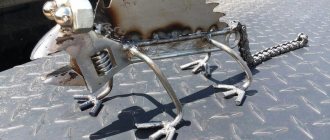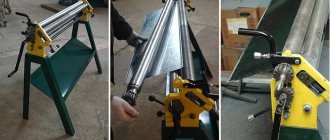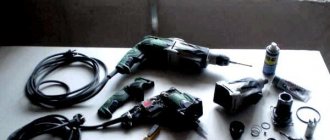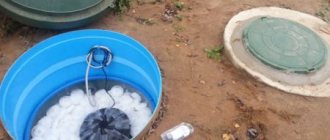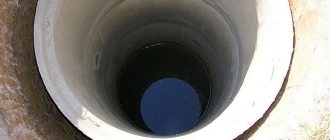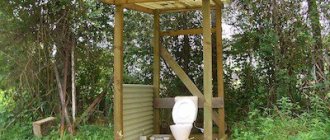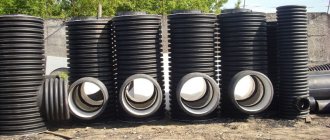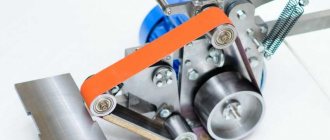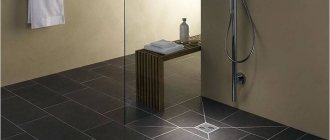Consider photos and sketches of forged gates and gates you can endlessly, the “iron lace” looks so elegant.
There are several options for solving gates and wickets: made of wood (carved or solid), iron (including forged), solid plastic or corrugated sheets.
Patterned wickets and gates forged from iron are the most elegant option. They are intended for decoration of individually built country houses, dachas and cottages.
Compatible with fences from:
- Hedge. Preferred hedges are molded rather than free-style.
- Metal is one of the most common options. Forged fences have one minus (it is also a plus, depending on the goals of the owners) - they are not able to provide “privacy” and open the area to the gaze of strangers.
- Corrugated sheets . It is affordable, but this option is demanding of the owner’s artistic taste, since it is not easy to successfully combine the graceful lines of a forged gate and the “bare” functionality of a fence made of corrugated sheets.
- Brick . An expensive, but always beautiful option for a fence, wrought iron gates are perfect in this case.
- Combined materials , for example, a forged gate will fit well into a fence made of wood and brick, or wood and stone (imitation stone). One of the most successful options: a forged gate or wicket plus a fence made of any material with forged elements of the same style. Solid fences with openwork metal “firmware” look very beautiful.
- Stone . Natural stone is expensive, but a stone fence is gaining new fans, since many modern and affordable materials have appeared that imitate different types of stone. Stone arches, towers and fences provide a harmonious backdrop for elegant wrought iron gates.
A little history
The art of forging has a thousand-year history, but to this day it does not stop in its development, although it has not changed dramatically over the past few centuries (the techniques of cutting, twisting, and welding metal are fundamentally the same). Hot forging appeared before our era; this period can be considered the birth of metal casting and forging. As for fine artistic casting, it originally decorated products made of silver, copper, and gold. And only in the 17th century did cast iron “lace” appear, which was used to decorate household items, tombstones, furniture, floors, walls, etc. Russian blacksmiths were famous for their art, and their products were in demand in Europe. Modern forges produce not only gates, but also bars for windows and balconies, bridges, fences, railings, and canopies.
Stamping, as an element of mass production, appeared at the beginning of the 19th century. Stamping temporarily pushed aside manual artistic labor. In Russia, artistic forging was returned only in the 70s of the 20th century, when sculptors turned to it. And only with the beginning of perestroika it again gained wide popularity, when people actively turned to individual construction.
Schemes and drawings
The valve diagram shows the location of all elements and their sizes. The consumption of materials and cost are indicated. The method of opening (inside or outside the yard) and the presence of automation are taken into account.
There are a huge number of options for decorative elements that are used in the production of forged sashes. Each owner makes a choice according to his own taste.
Dimensional diagram of the gate
About the material
Gates made of iron are either cast iron or steel. Cast iron is highly durable and reliable, but forging it is fraught with certain difficulties. Therefore, cast iron is more expensive. Steel is softer, more pliable and allows you to create finer elements and complex patterns.
The process of creating a cast iron product is more universal: first, individual elements are smelted, and only then the finished product is assembled from them. This approach allows us to ultimately obtain a sufficiently airy fabric that will be distinguished by high strength, wear resistance and rigidity. At the same time, cast iron is a relatively brittle material; with a strong impact, it can split into pieces or become cracked. Steel, due to its ductility, does not have such disadvantages. In modern realities, the difference between gates with forged elements made of cast iron or steel is not noticeable; anti-corrosion treatment preserves the original appearance of the product for decades.
The result largely depends on the individual skill of the blacksmith.
When choosing a method for making forged gates (cold or hot forging) and material, be guided by offers and samples presented in local workshops.
A new trend is to decorate metal patterns on forged gates with gold decor. If the craftsmen have good taste, such gates will be luxurious and rich, but not pretentious. Highlighting individual elements with a golden color can emphasize the pattern, placing accents and giving the entrance to the house even more pomp and festivity.
How much do wrought iron fences cost?
Wrought iron products are one of the most expensive fencing materials. The price of forged gates depends on many factors: size, design, quality of material and other features.
Large sliding gates have a higher cost. Due to its durability, the cost can be economically justified, because even simple gates will serve for a long time.
Wrought iron is heavy and requires a strong base and careful installation. The process of installing metal sliding doors is very labor-intensive and incurs large additional costs, since they require a properly organized foundation.
Unusual wrought iron gate
Beautiful wrought iron gates with polycarbonate
How metal is processed
There are many ways to create patterned designs from metal. Sheet iron is subjected to embossing, perforation, molding, bending, and shaping. Each method has its own tools and skills, requiring not only technical, but also artistic skill. One of the most “free” methods is metal-plastic. The pattern is formed directly on the metal surface using special tools. In this way, real works of art are created on the surface of metal - the master is not limited technically.
Photo gallery of design styles
Below are photos of forged fences decorated in different design directions.
Modern
Smooth lines predominate. There is an asymmetrical pattern.
A characteristic feature is plant and animal motifs in the form of flower stems, images of eagles, swans.
The elements are simple and airy.
Loft
This style is characterized by a minimum of details, which are created with little artistic roughness, without additional polishing and achieving ideal forms. Often these include straight lines, sharp angles and contrasting colors.
Baroque
This is a solemn and majestic style. The gates are decorated with many spirals, curls or various ornaments. The pattern starts from the center, smoothly moving to the edges. The rods intersect each other, forming curls. The elements are created as airy. An excellent option for combining black, brown and gold colors.
Chalet
Chalet-style forging symbolizes rural culture, so the elements are selected as simple and noble as possible. The main thing is not to overdo it with quantity.
High tech
Modern design direction, restraint of lines and practicality of every detail.
Forging is combined with innovative materials (polymers, metal alloys). Forms are strict and businesslike. No pomposity or airiness. lack of plant and other ornaments.
Provence
Light romantic style. Painting is done in delicate light shades. Small floral motifs and plant stems that run through the entire door leaf are welcome here.
Gothic
Decoration is done in black and tones close to it. This is the geometry of the patterns. All details rush upward.
Typical Gothic elements are thorns, sharp tips, peaks, trefoils.
If the owners want their gate to be different from its neighbors, memorable and impressive with its originality, then choosing forged structures will be the right decision. With certain skills and tools, you can make simple malleable elements yourself. If you do not have such skills, then it is better to order the gate from specialists.
Types of forged gates
If you think that airy metal patterns through which you can see the yard are the only option, then you are mistaken. There are also:
- Gates made of sheet iron. Forged elements appear in the form of decorations superimposed on a smooth metal profile. The decorative solution sets or supports the overall style. Gothic, floral, classical and other motifs are used.
- Wooden gates with forging. Such gates look expensive and solid. Wooden panels alternate with panels decorated with forged elements; metal perfectly emphasizes the warm beauty of wood. The wood can be painted. Such gates are usually solid and combine well with marble, brick, and stone surroundings.
The design options are unlimited. It all depends on the personal taste of the future owner of the gate and the general style of the house or site. Let's take a closer look at the styles in the photo.
Types of forged fences
At the moment, there is a huge selection of gates and gates; every owner can turn their ideas into reality and perfectly decorate the appearance of the house. The following types of fencing are distinguished:
- Sheet iron. It is a metal profile decorated with various designs and patterns. Decoration can be done to suit any style; classical, Gothic, country, floral and other ornaments are widely used.
- Wooden with forging elements. The appearance of such products is exquisite, they look rich, combine beautiful patterns, fancy ornaments and simple motifs. Great for brick, marble and stone.
Wooden structure with forged elements
Regardless of the type, each forged fence has decorated elements that perfectly complement their overall appearance. Moreover, when decorating, all styles, any shapes of patterns, various images and the wildest fantasies are used.
All types of forged structures can be seen by looking at the sketches. They will give a more complete idea of the material, appearance and other nuances.
Metal gates with forging elements
Style solution for forged gates
If we consistently trace the development of blacksmithing and the influence of the era on the appearance of forged products, we can identify elements of the following styles:
- Romanesque style - strict elegance, solidity, heaviness.
- Gothic – severity, spirituality.
- Baroque - splendor, luxury, pomp.
- Rococo - lightness, floridity, whimsy.
- Classicism - rigor, simplicity, light elegance.
- Modern – fantasy, imagery, expressiveness.
- High-tech or minimalism - the absence of curls and smooth lines. Strict geometry.
Particularly worth highlighting are eclectic solutions - a mixture of styles. Such a product will require extraordinary taste, but a successful result will look fresh (“not like others”) and truly original. However, failure can look ridiculous. Art Nouveau, Baroque or Rococo styles have the same high requirements. All of them are “on the edge” and there is a risk of “overdoing it”. The safest choice is classicism, although it may seem boring.
The motifs of the peoples of the world look original: Celtic, Slavic, colonial, etc.
Forged fences in the Gothic style are popular because the abundance of sharp “predatory” elements makes them convenient from a security point of view (spiers, spikes). In addition, this style cannot be served cheaply. Probably because it was initially in demand in the construction of spiritual architecture. Traditional details for the style: shamrocks, rosettes, lilies, ivy branches. Often - lattices, curls with notches, figure eights.
The style of the gate should be combined with large and small architectural forms (benches, lanterns, turrets, etc.) and the overall design of the site.
Designer's advice: a simple but high-quality fence made of brick or stone is the best backdrop for a lush, rich, jewelry-forged gate.
Decoration and design elements
Decoration is an important element that gives some zest to future products and makes them beautiful. Therefore, if you wish, you can decorate the fence yourself, and it is not necessary to have skills in this matter; now computer graphics and other auxiliary devices are widely used.
If you want to do something with your own hands, then the following decorations that you can make yourself are perfect for decorating a future fence:
- Peaks. They are created using special blanks. Then you need to cut out squares from the metal and give them volume by heating them in an anvil. The finished figure is given an ideal smooth shape using a grinding machine.
- Spiral rods. It is necessary to cut a small piece of metal, heat it and use a vice to give it a spiral shape.
- Various figures. On metal 0.3 cm thick you need to apply some image and cut it out with a grinder. Then weld the required part and the figure is ready.
In addition to the listed decorations, self-drawn patterns and decorations that can be transferred to paper, and from it to the product, will serve as excellent decor. When decorating, you can use any technique and style that you like.
Therefore, a forged fence will perfectly complement any design and add sophistication, richness and beauty to the appearance of a city or country house.
How to choose wrought iron gates
To make a good choice, consistently answer the questions:
- Desired height. The higher the safety requirements, the higher the fence (safety problems are solved in other ways, in addition to the presence of a mechanical obstacle). Purely decorative fences and gates – up to one and a half meters high. In order to completely rid yourself of the views of strangers, you need 3-meter fences, and the gates are designed with an arch.
- Width and decor of fence sections. The narrower the section, the safer, but the more expensive the fence will be, especially if it is planned to be decorated with forged elements to support the gate design.
- Gate size. Depends on the environment. The larger the plot, house, fence, the larger the gate. This will also affect the future forging pattern. The larger the area, the more options.
- Gate functionality. What kind of gates are needed? Sliding, with a remote control, with or without a gate nearby, how wide is the distance between the bars, etc. Only after that, study the sketches and photos.
Opening mechanisms:
- Forged swing gates with or without electric drive. For overhead structures, an underground drive is chosen; it is not visible. Other drive types: linear and lever.
- Recoil mechanism. It saves space, a car can drive up close, but it is demanding on the design of the gate; only a straight top is acceptable. The forged sheet is heavy compared to the metal profile, so a reliable drive is selected.
- Lifting mechanism. As with sliding, forged elements are superimposed on a base - a profile sheet.
Important. The entrance group is the face of the house. Especially if we are talking about closed blind gates that reliably hide what is behind them. Therefore, you should clearly define what impression you want to make on invited and uninvited guests.
Today, even exquisite wrought-iron gates can be equipped with a full set of amenities and security features: alarm, tracking devices, communication lines, automatic drive, lighting.
Gate mechanisms
They are divided according to their characteristics into:
- swing;
- recoil.
Swing structures are universal, do not require a lot of space, and operation is quite simple. This type is more in demand; it can have various decorated elements, patterns and decorations. Suitable for any style.
Their shape can also be different, which allows them to be installed on any site and will suit any preferences of the owners. For a more complex type of product, additional decorative elements are suitable. You can see the fences in more detail by looking at the fence sketches.
Sliding structures require a lot of knowledge to install, but in appearance and function they are in no way inferior to swing ones. They can have different decor; any style in their design is allowed.
Sliding gate mechanism
In addition to any special features, swing and sliding mechanisms can be automatic, that is, they can be opened and closed remotely.
Forged gates and wickets 52 photo ideas:
Instructions for applying a pattern to the gate
Despite the fact that it is not at all difficult to apply a design to the gate, a certain sequence must still be followed. Step-by-step instruction:
- Level the surface and remove dirt and dust using a damp cloth.
- After cleaning, apply primer and wait until it dries. For metal surfaces there are special compositions for metal; for wooden surfaces, any impregnation or antiseptic will do. Wait about a day for the primer to dry.
- It is recommended to apply paint only in dry weather. The pattern is applied in stages: first one color and only after drying the next one is applied.
- When applying the stencil method, the stencil should be firmly secured so that it does not move during the painting process. To do this, you can use masking tape, which can then be easily removed without leaving marks.
Using the same principle, you can paint the gate, the pillars on which the gate is attached, as well as the fence. If the surface is brick or concrete, then these features should be taken into account and the pattern should be applied with façade acrylic or silicone paints.
